- Published on
Malort & Omakase
- Author
-

- Name
- owls
- Mastodon
- @owls@yshi.org
The CH Distillery purchased Jeppson's, the makers of Chicago's finest product, a few years ago. I've walked by their taproom a lot, but I've never been in there, expecting it to just be the same bottles I can get at the store and a couple bar snacks.
But no: for some reason, they do omakase. And it's really quite something!
The CH Distillery makes some good products: I have their key lime gin and dill-forward1 aquavit. I've been buying those since before they became The Malort Company.
Jinsei Motto was added to the tasting room as a pop-up, and I guess it was popular, because it became permanent. I guess the chefs met the CH owner around their building and one thind led to another?
After arriving a little early and sipping a highball at the bar, we moved to a back room where they've got the resturant set up. There's a sushi bar for omakase, and a dozen tables for ala carte diners.
The menu has an option for tableside omakase, so I think you can decide last-minute to turn up, without having to book it. That's good to know: if you're ever in West Loop and you forgot to eat, you can duck in for some discrete omakase.
They have a lunch omakase too; $60 and presumably it's fast enough for a lunch hour. I wish that existed when I was working in the loop!
The Meal
They started by talking a bit about their practices: they dry-age some of the fish. I don't know how typical this is -- I've never had the chef describe dry-aging. That's slightly different from curing, so I think this is fairly novel and it's not just them couching it in terms more familiar to Chicagoans2
Depending on how lean or fatty the fish is, the dry-aging process produces different results. Fattier fishes like mackerel really relax: the muscle becomes tender and melts in your mouth, whereas it's normally pretty dense and toothsome. You'll see two mackerel bites back-to-back in the gallery: this was them showcasing the difference dry-aging makes. The one with the pickles was dry-aged; if they didn't tell me it was mackerel, I would have thought it was something else entirely!
-

An oyster decanted from its shell
-
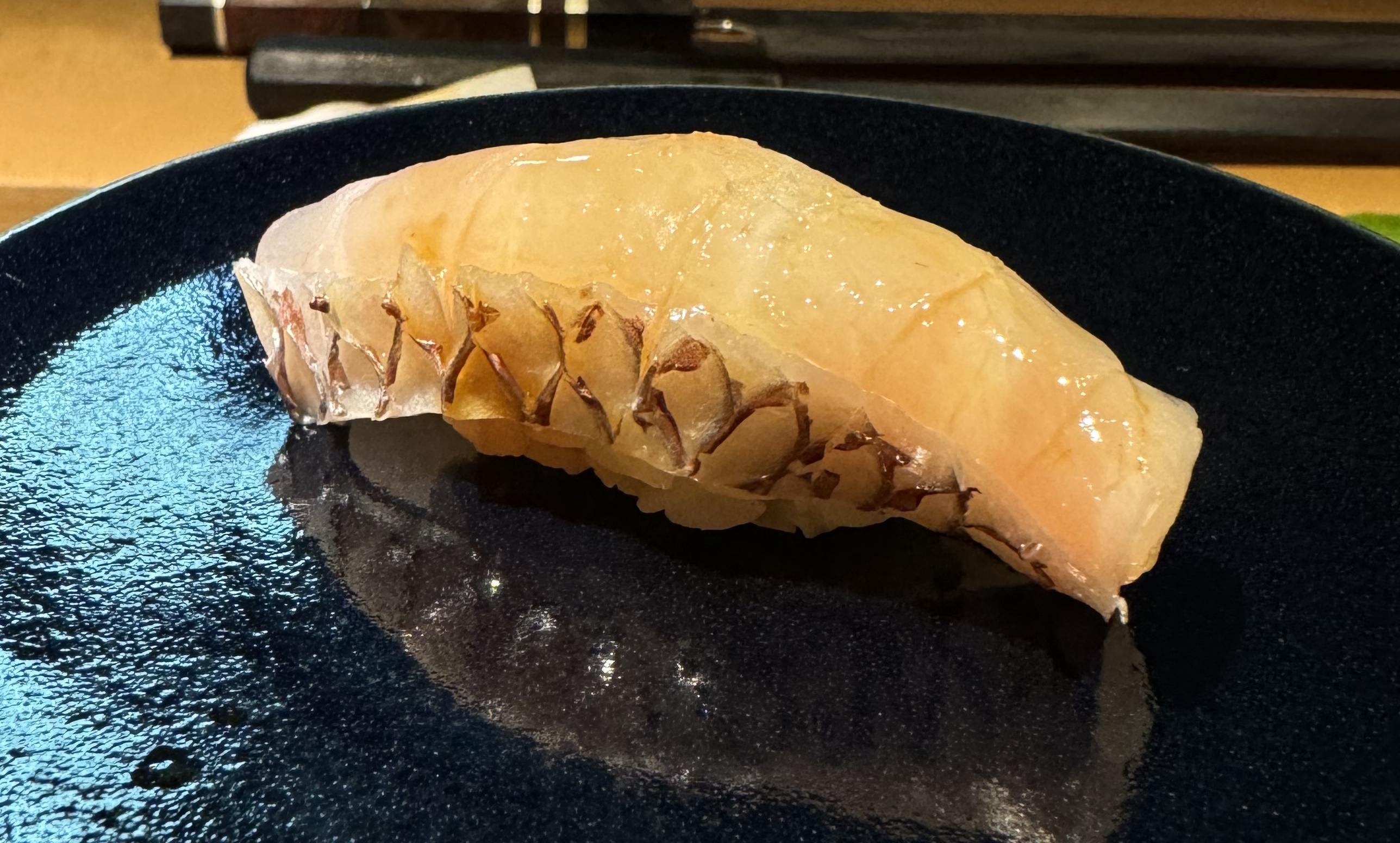
Sea bream
-

Golden eye snapper
-
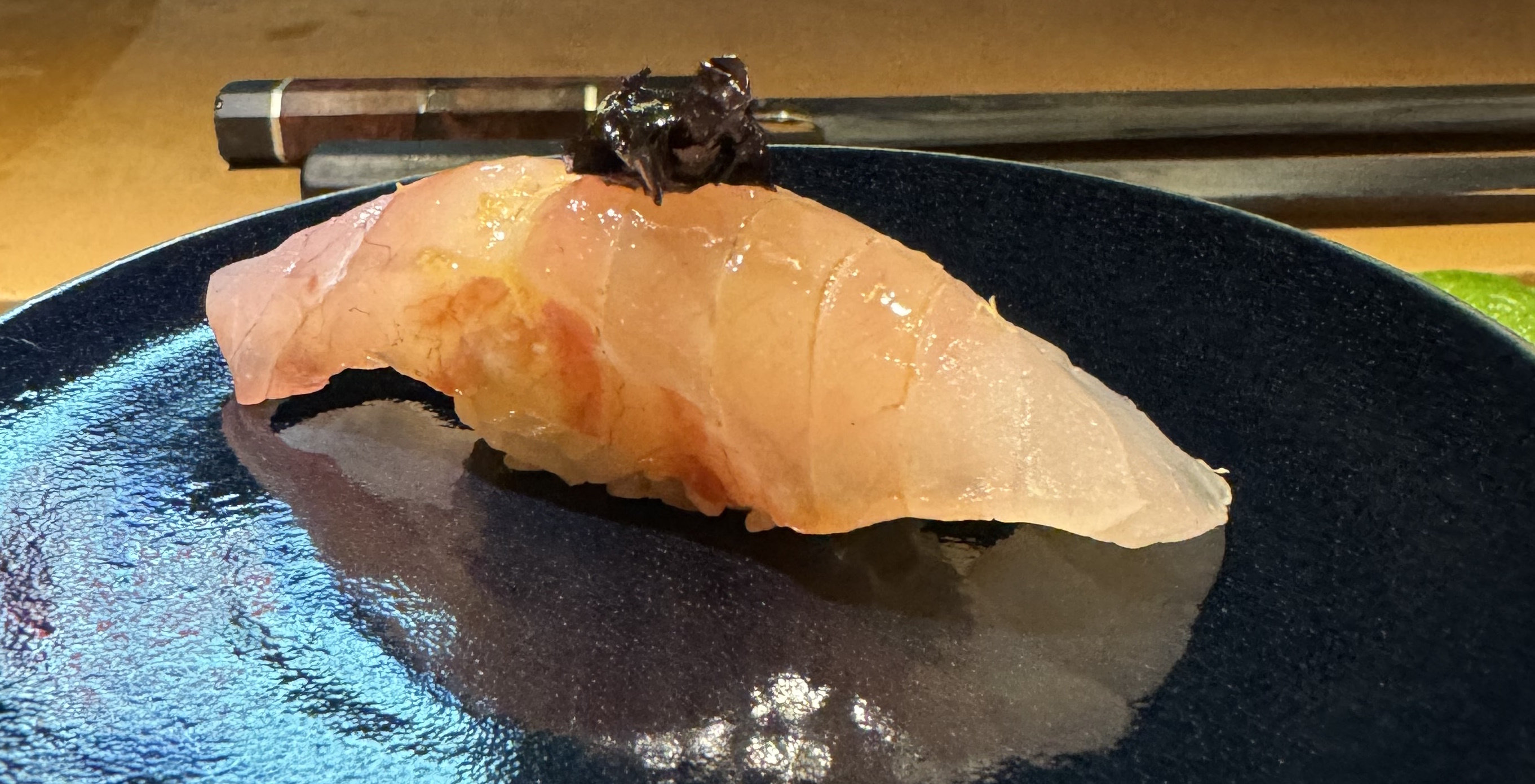
Sea perch
-
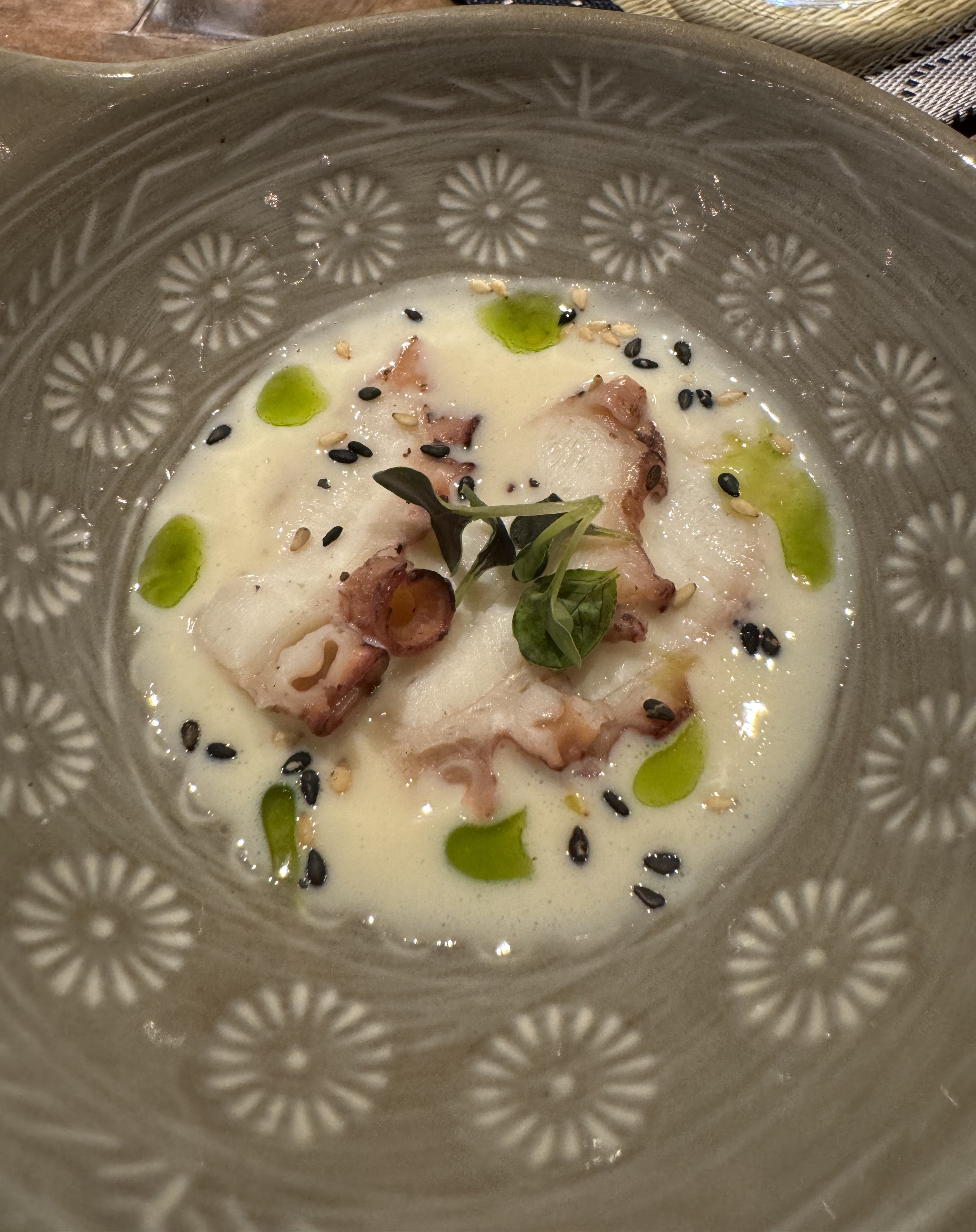
Spanish octopus
-
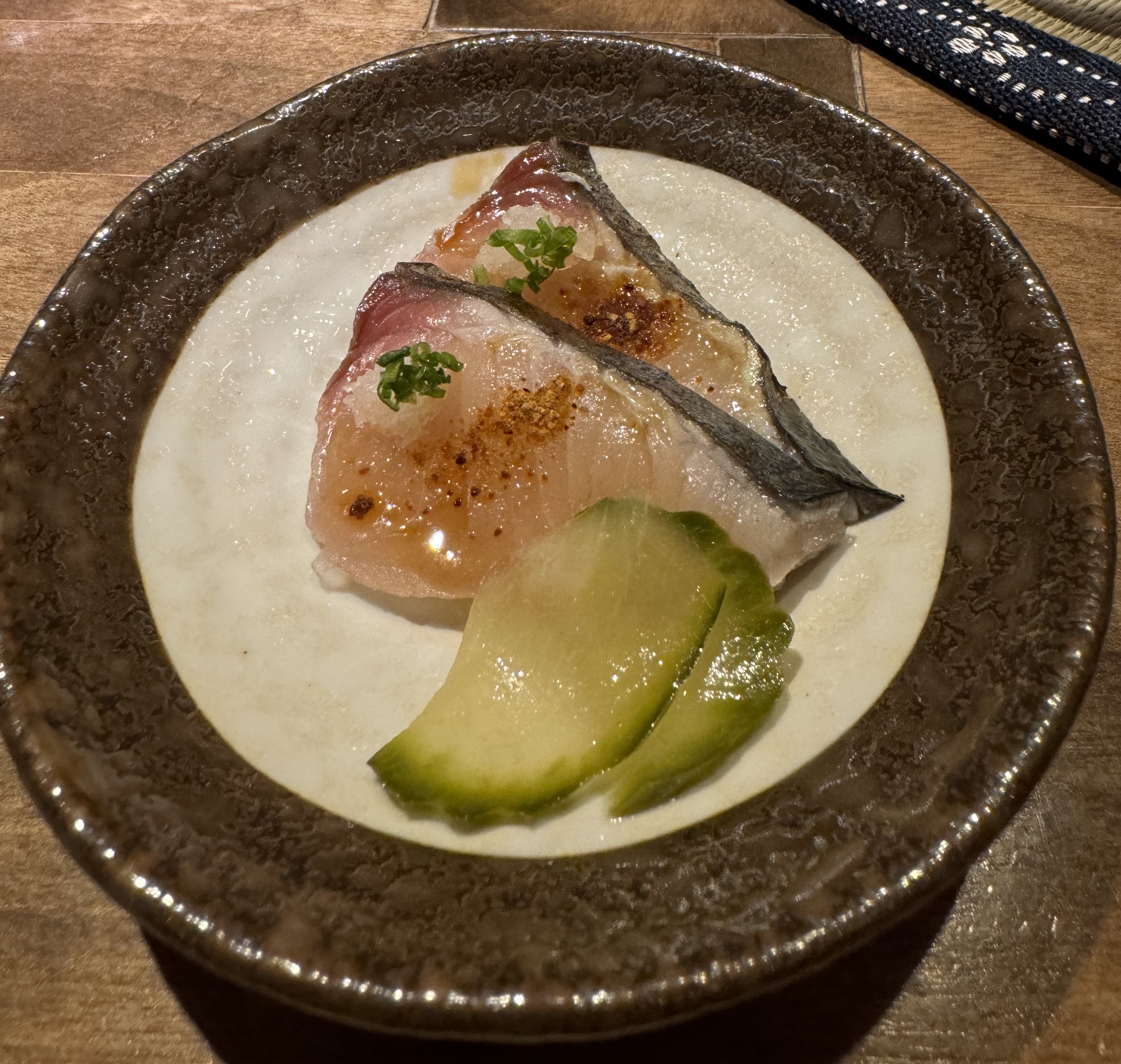
Dry-aged mackerel & pickles
-
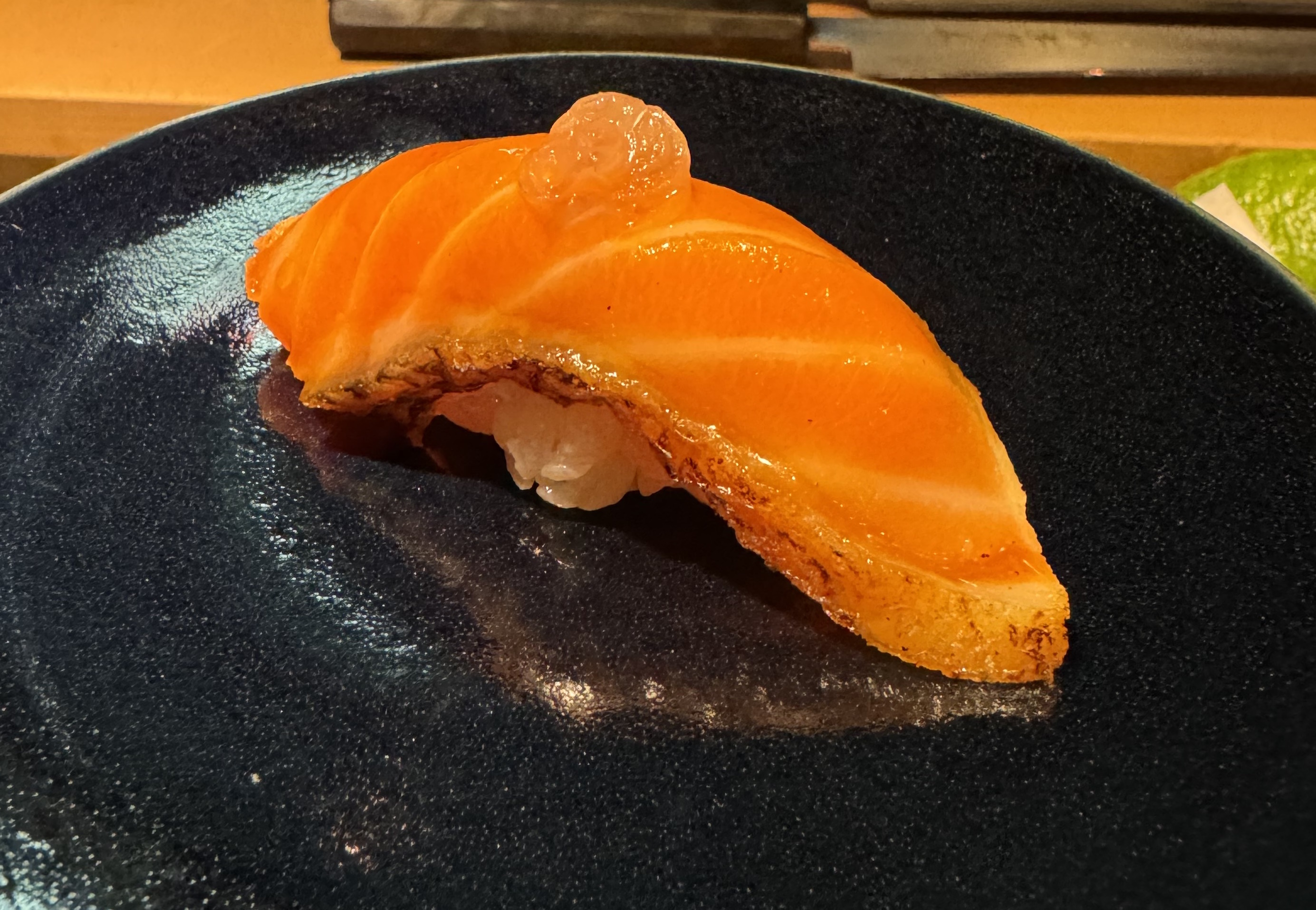
Ora king salmon
-
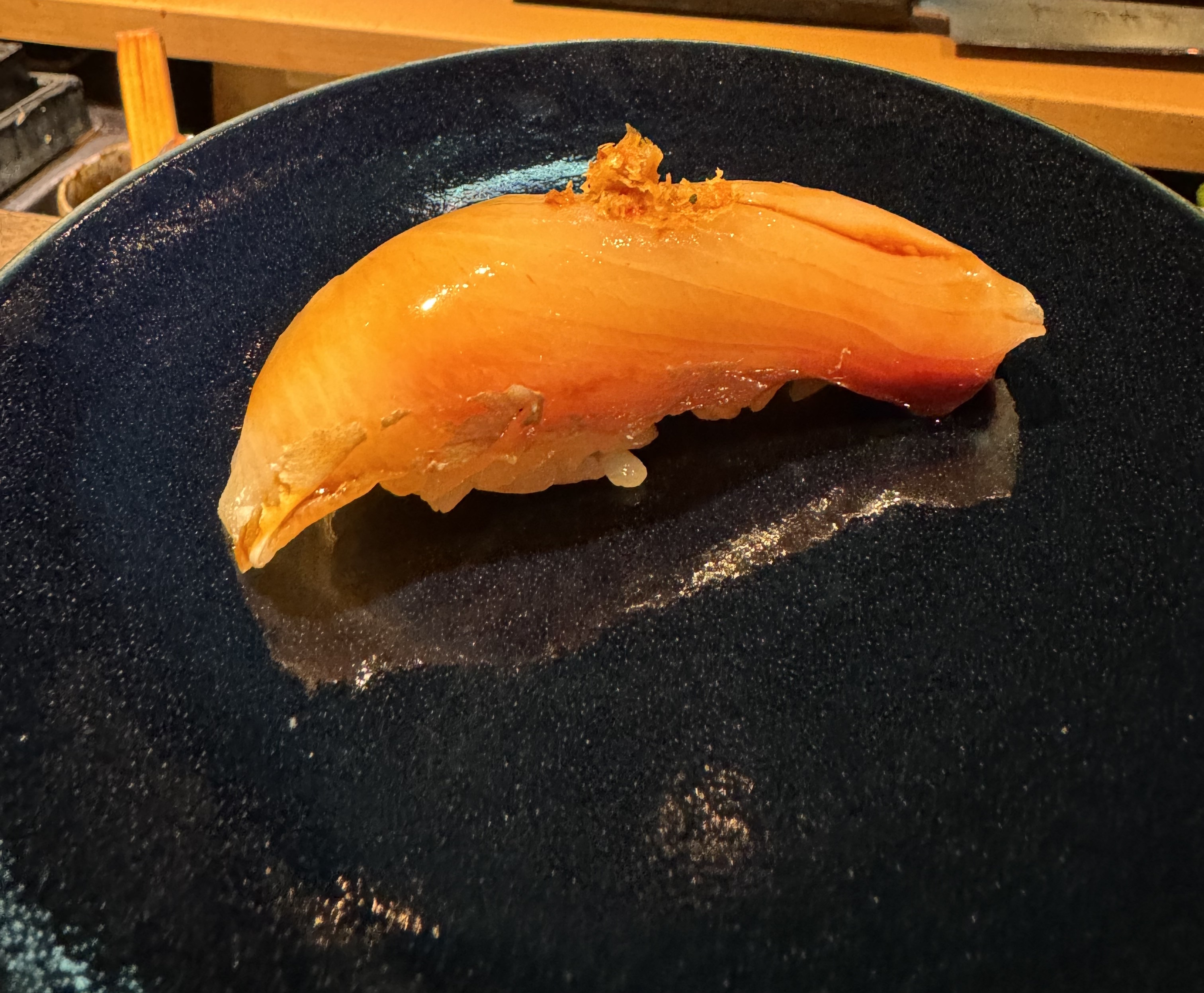
This was a bonus course: amberjack, but brushed with giardiniera oil and garnished with a giardiniera crumble. For the Chicago vibes.
-
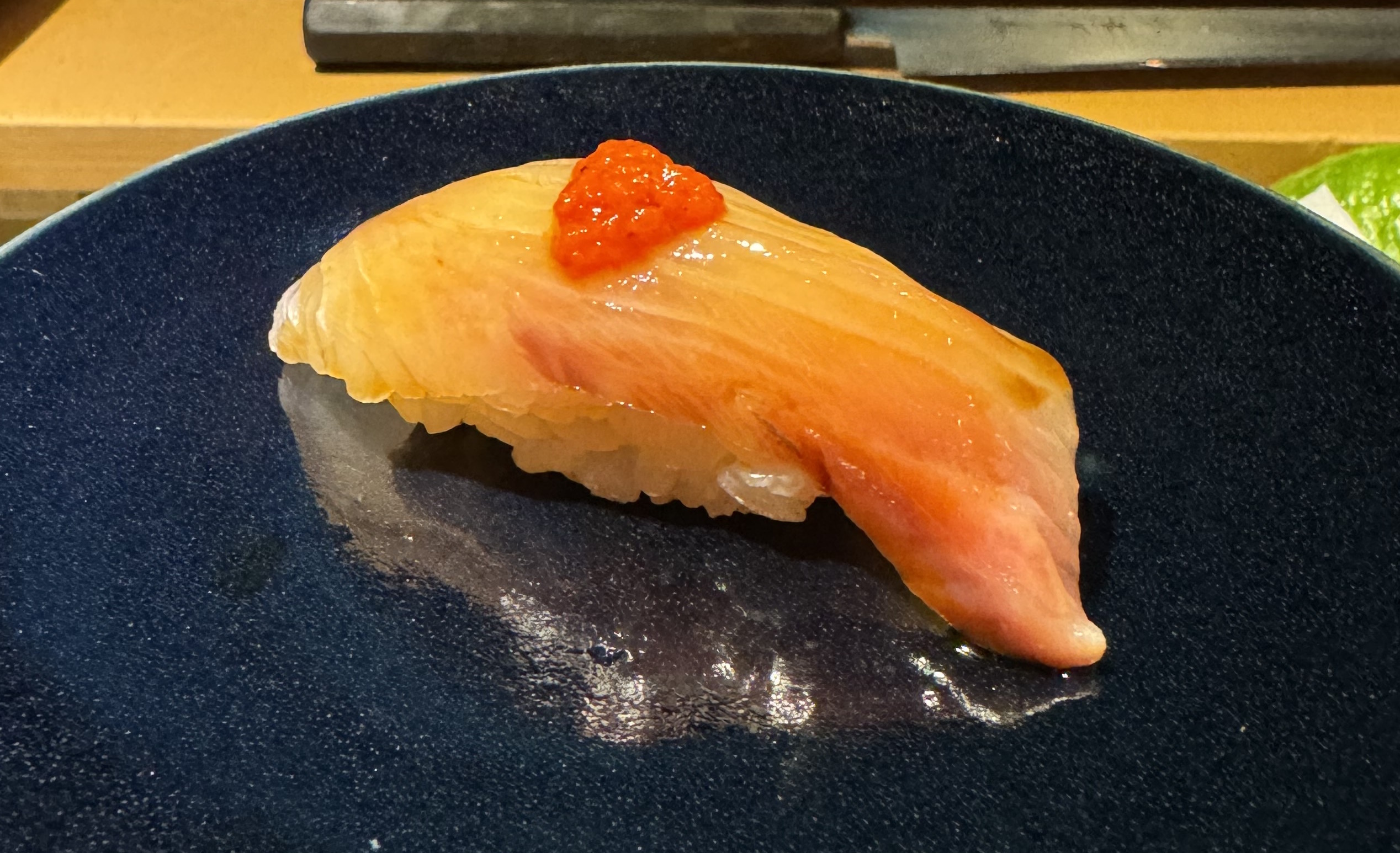
Amberjack
-

Mackerel
-
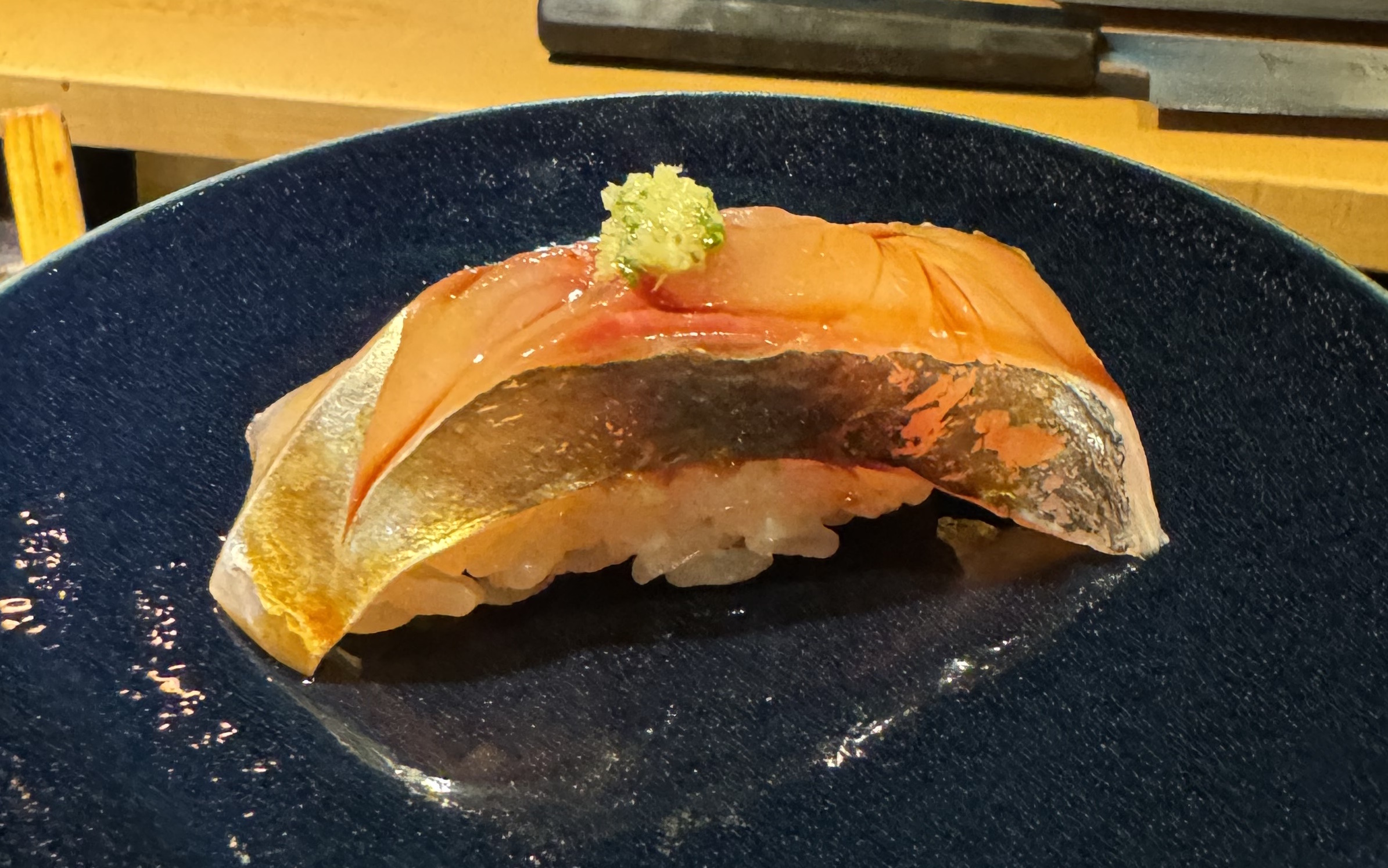
Horse mackerel
-
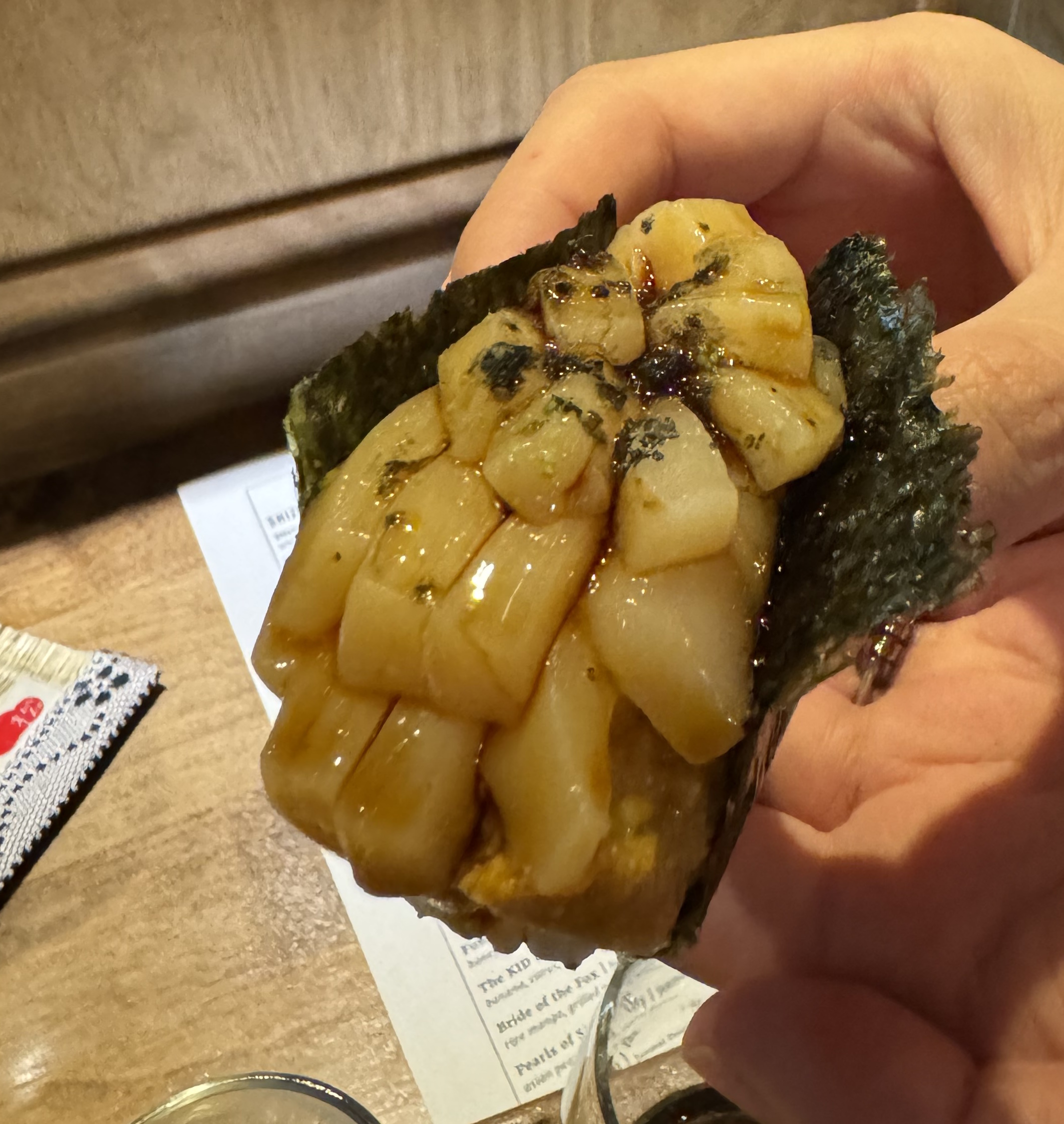
Scallop
-
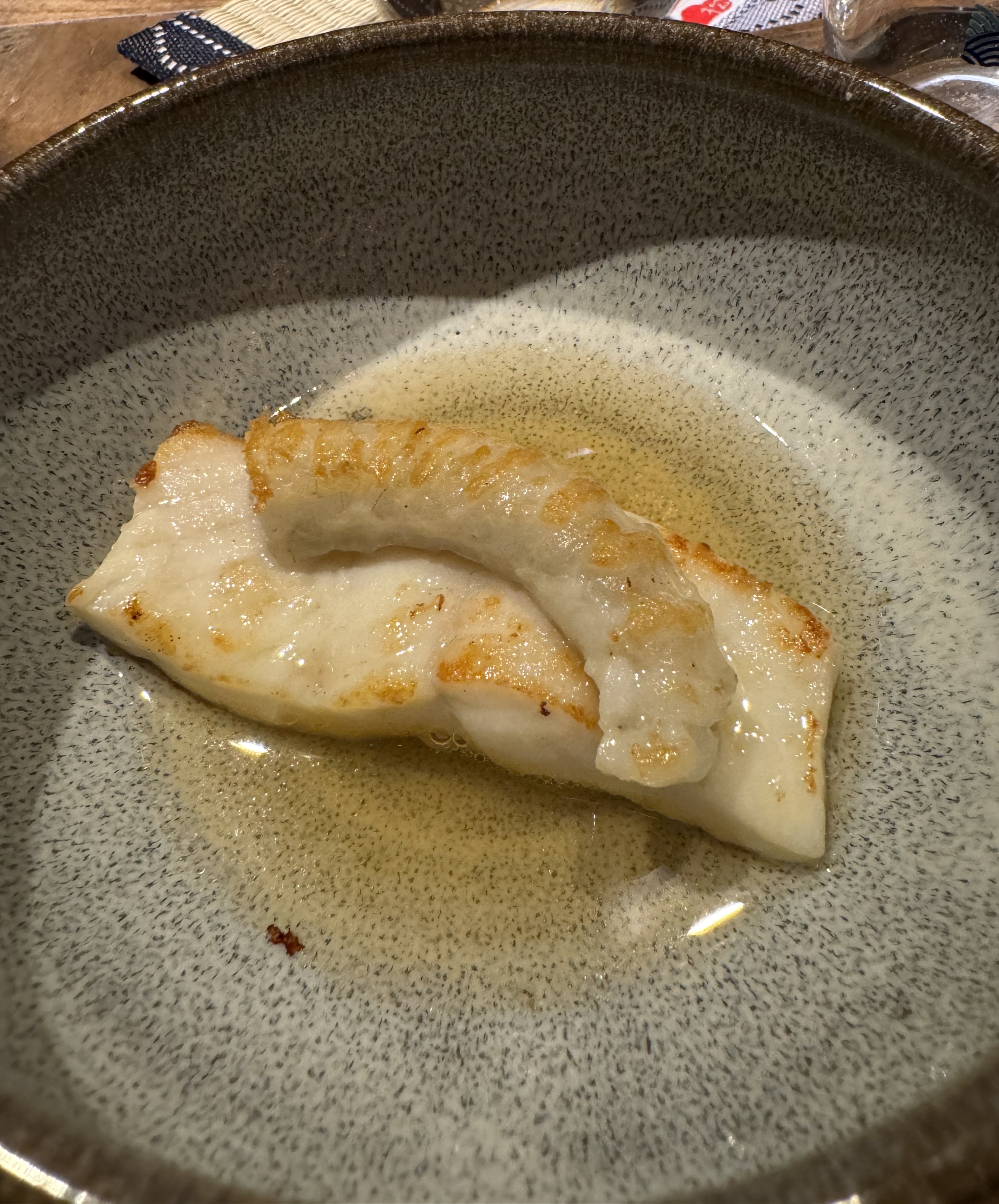
Two cuts of turbot, both cooked and served in a little broth
-
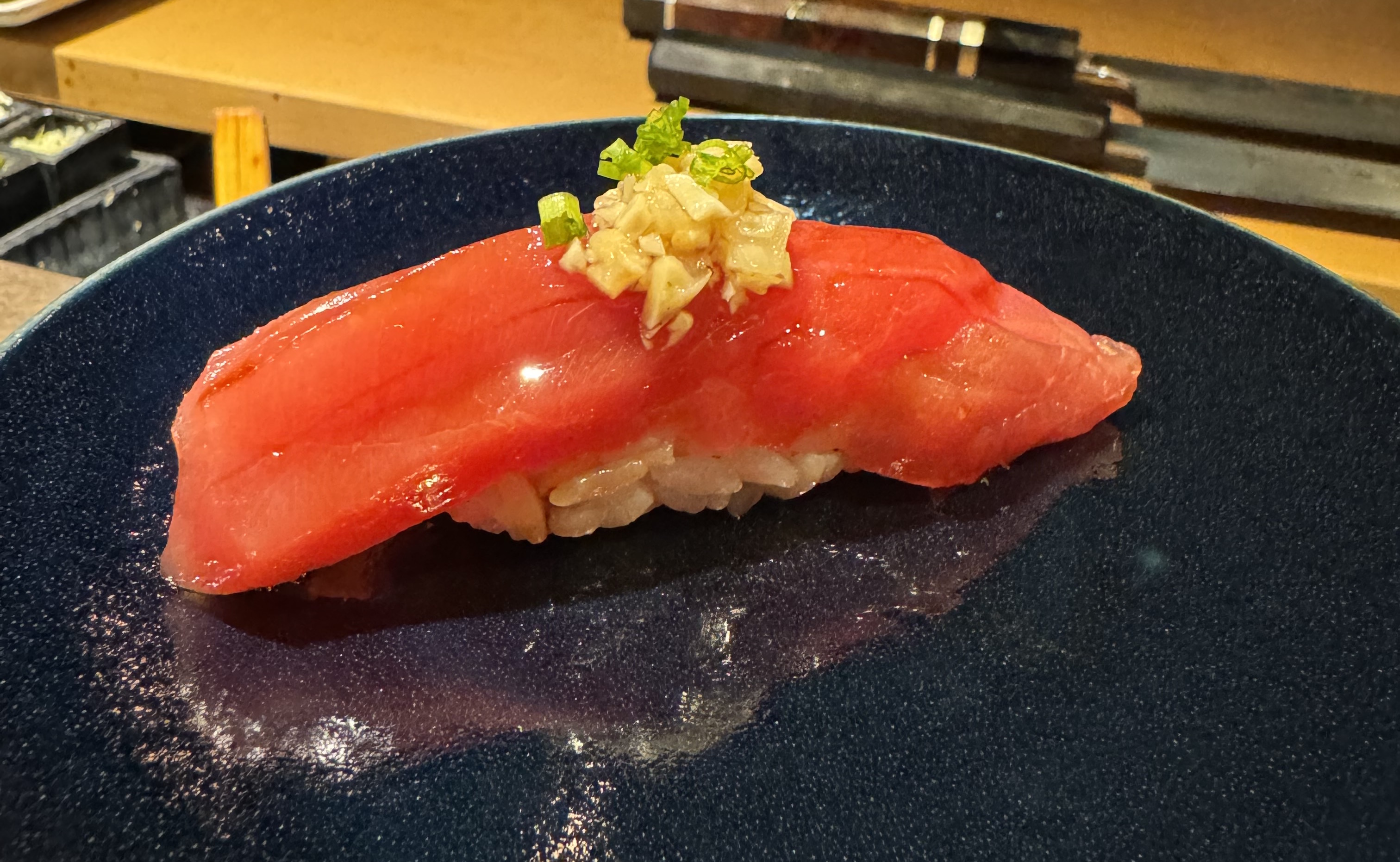
Lean tuna
-
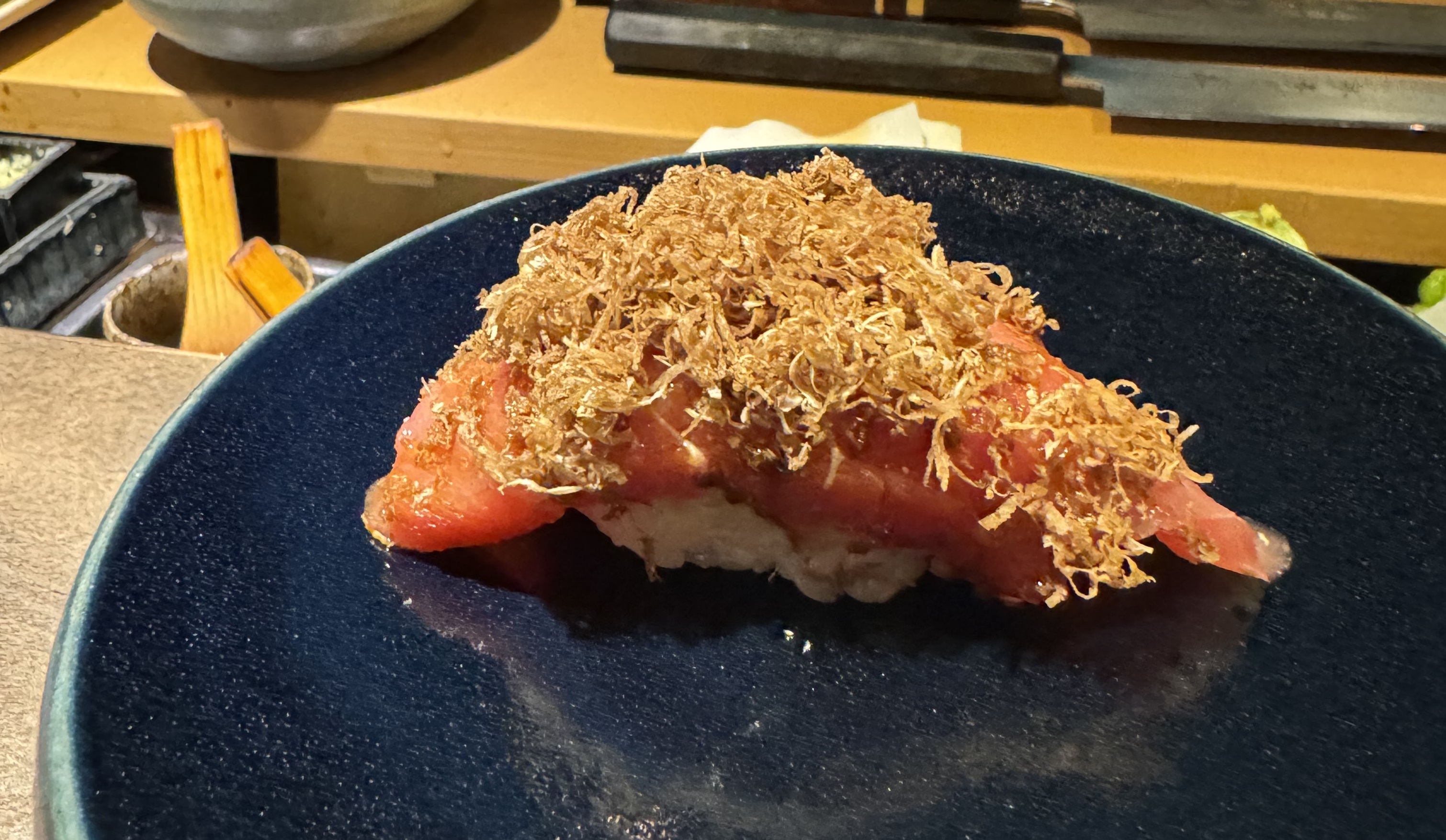
Medium fatty tuna, with white truffle
-
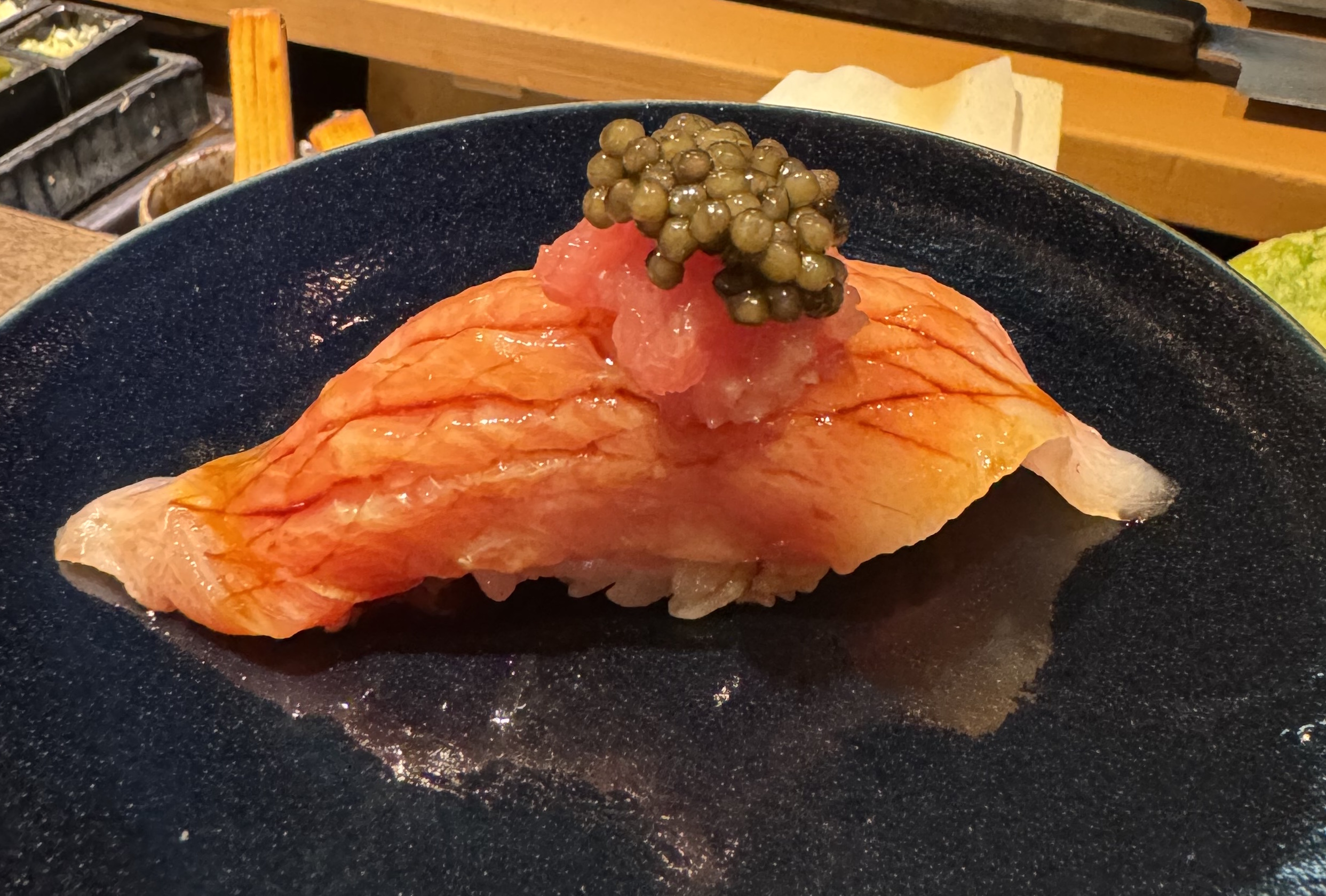
Fatty tuna with caviar
-
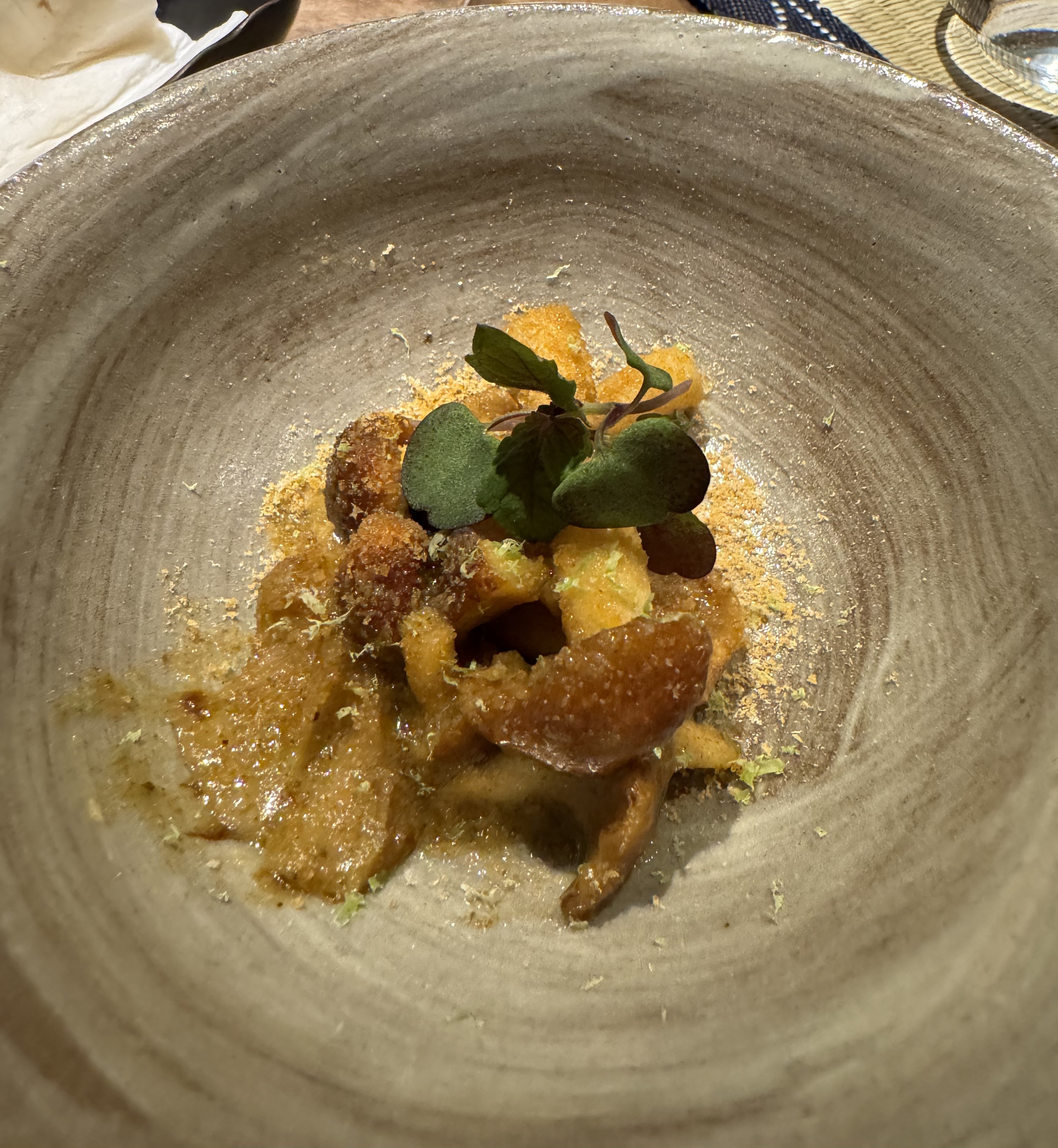
Chestnut mushrooms
-

Steak & eggs: wagyu, grated egg yolk, and caviar
-
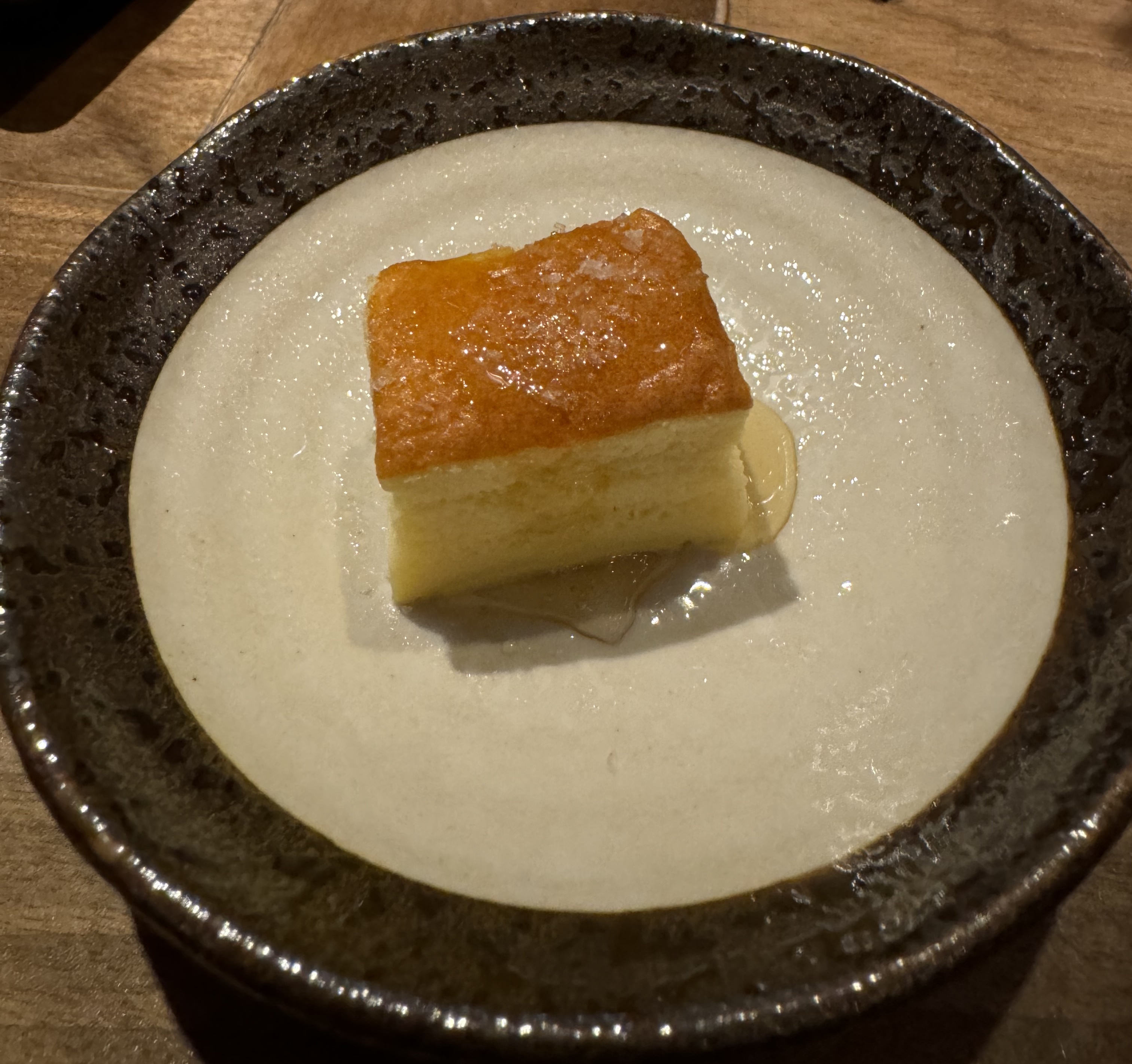
Tamago is usually a slightly-sweet omelette -- but this is prepared more like a Japanese cheesecake, so it's very fluffy.
-
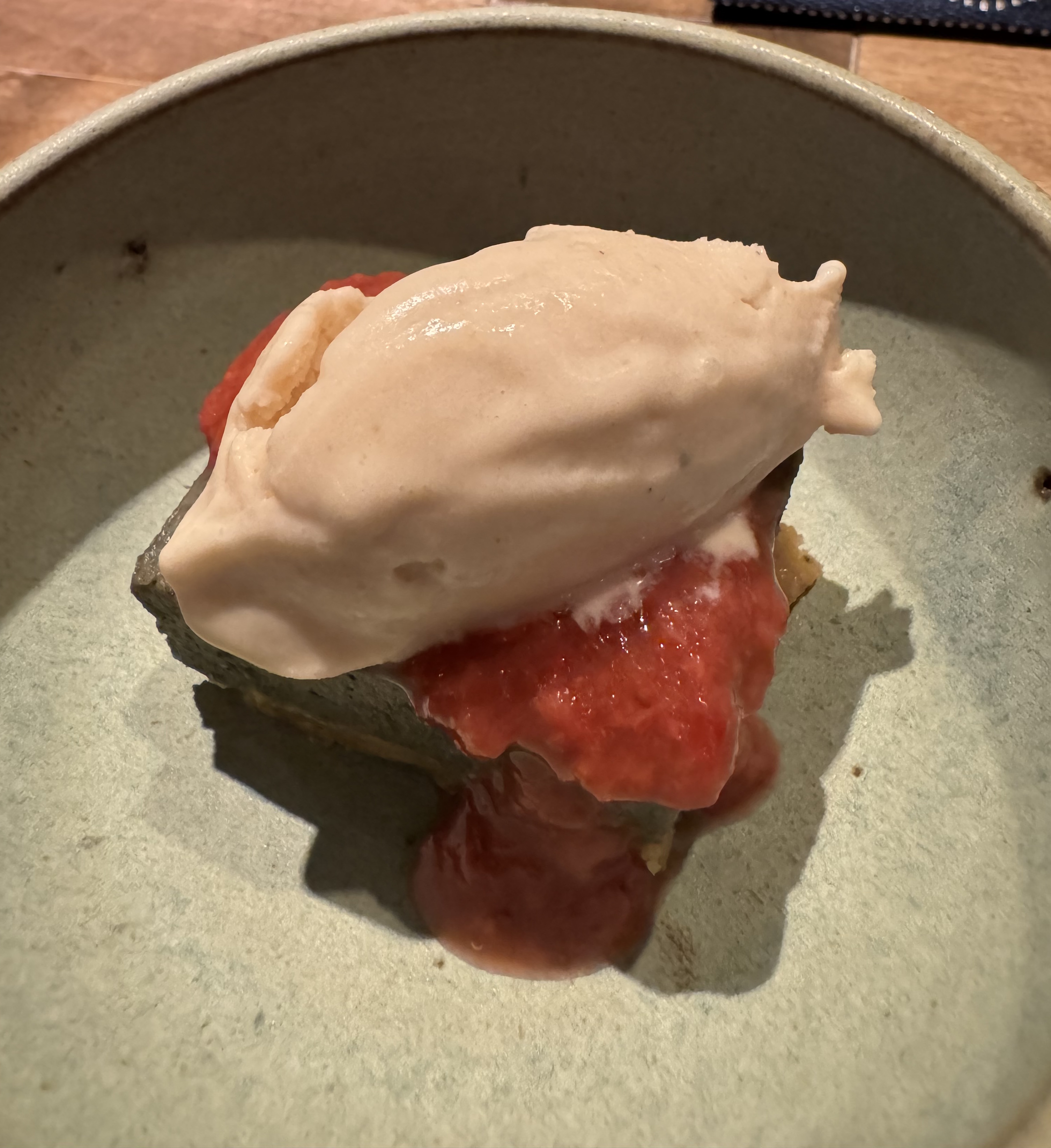
Black sesame cake with koji-femented strawberry toppings
-
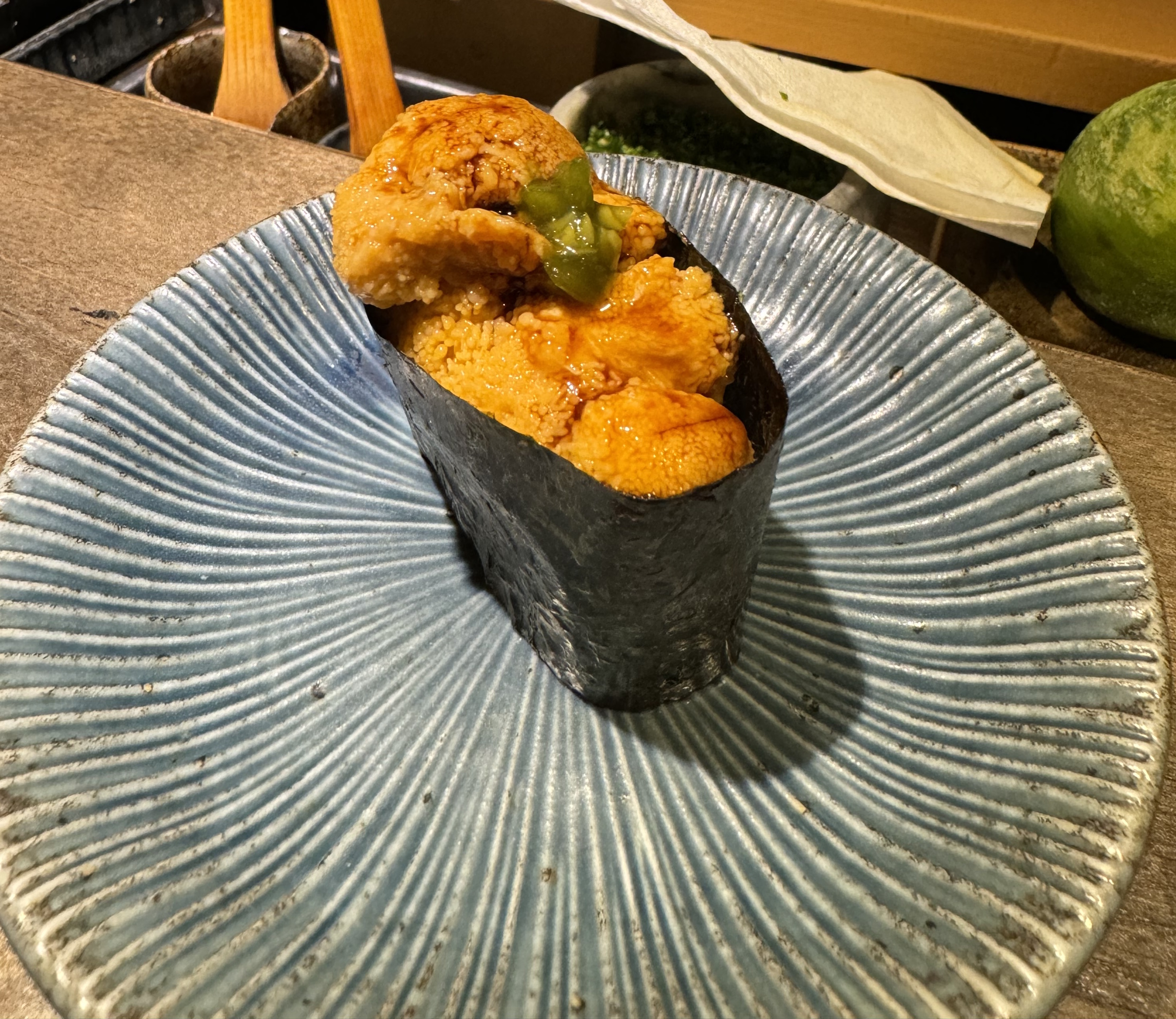
Got some uni ala carte, since you always gotta have uni
-
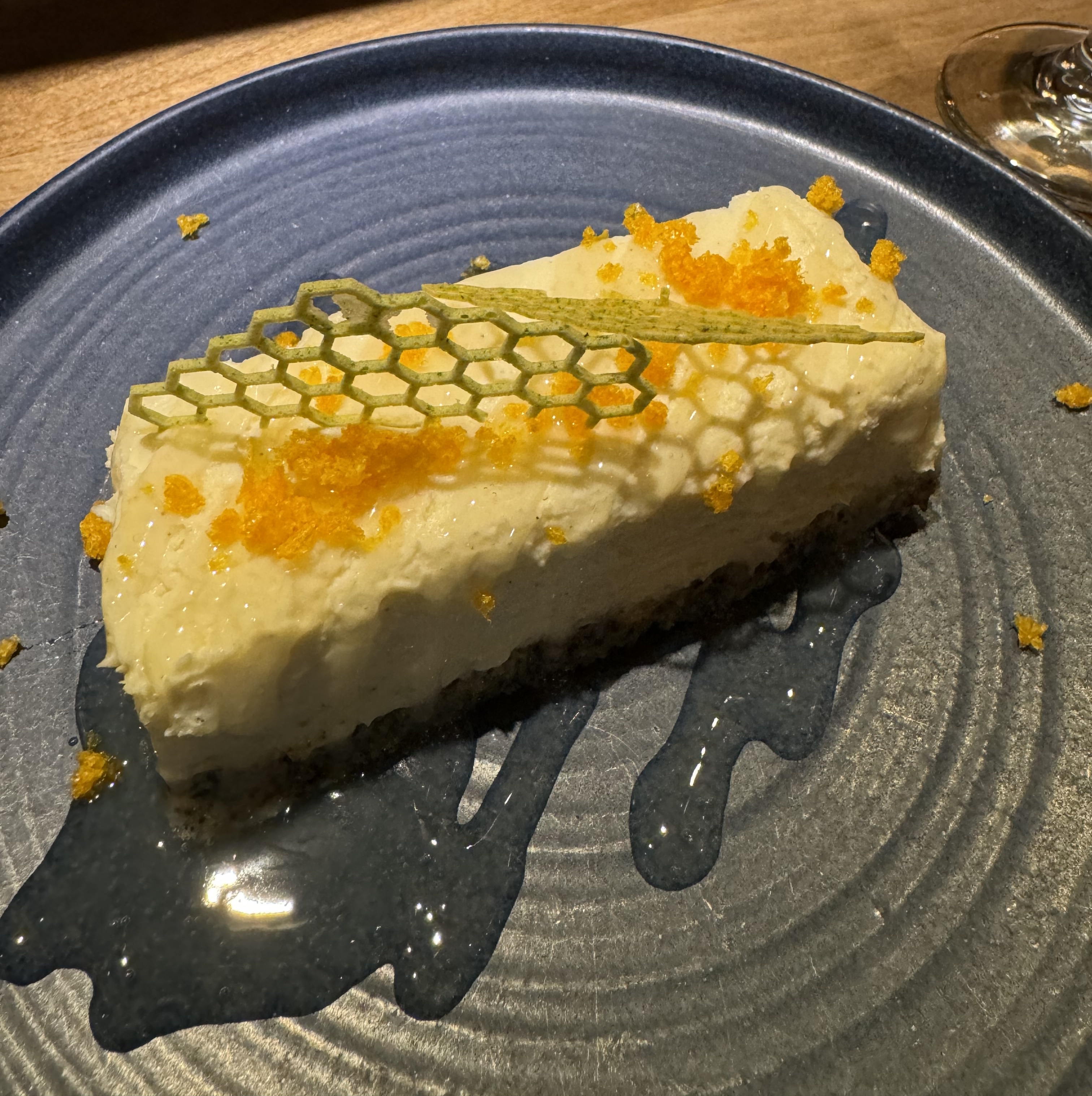
Cheesecake, to finish our drinks with
-
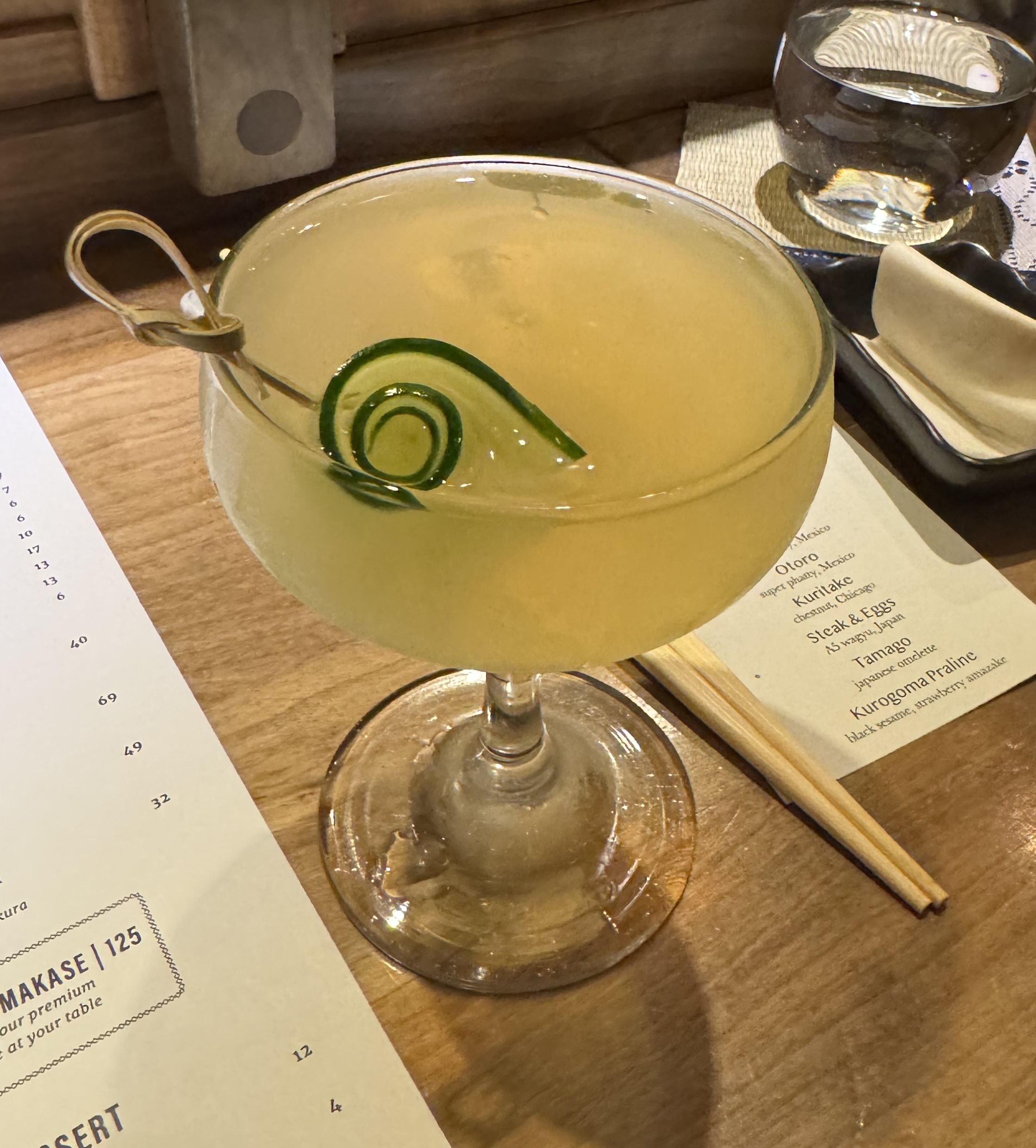
Live, Laugh, Regret: peppermint malort, raspberry, green tea, yuzu, lemongrass, and orange blossom
-
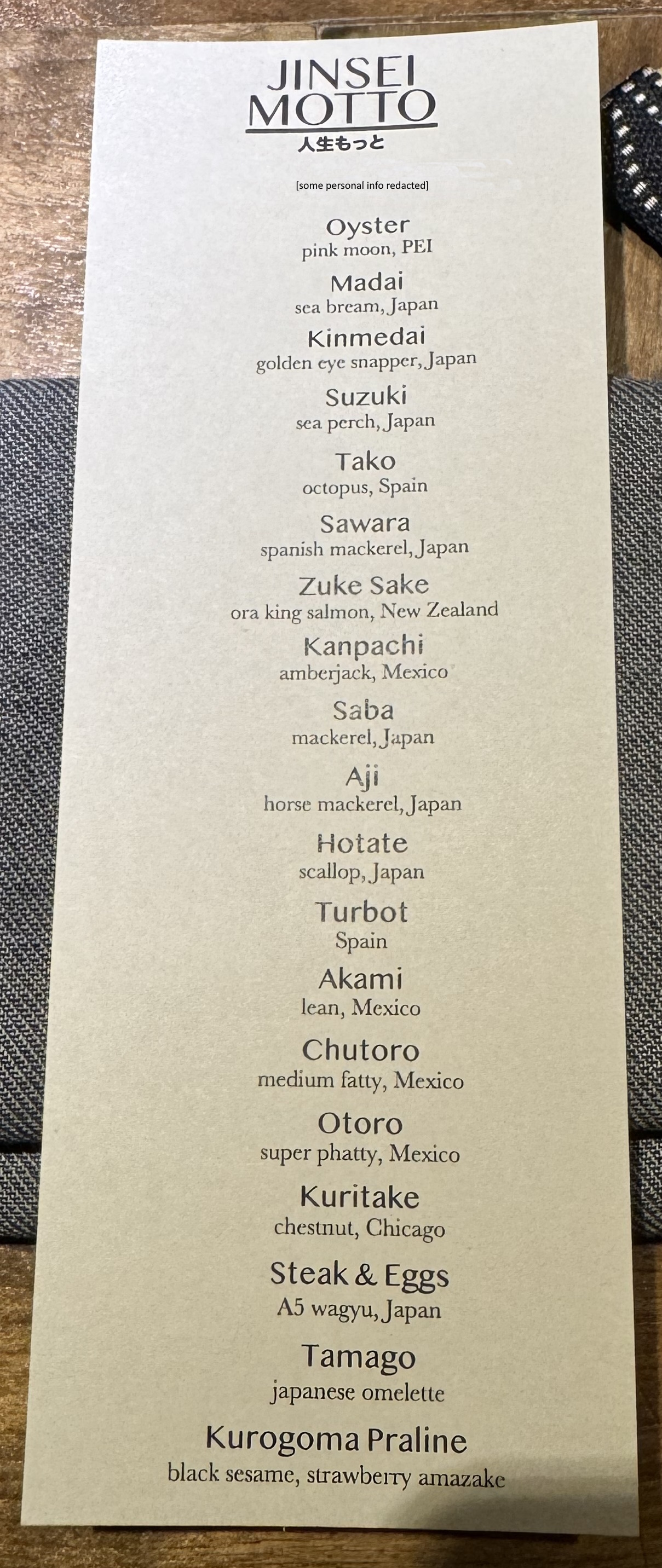
The menu
-
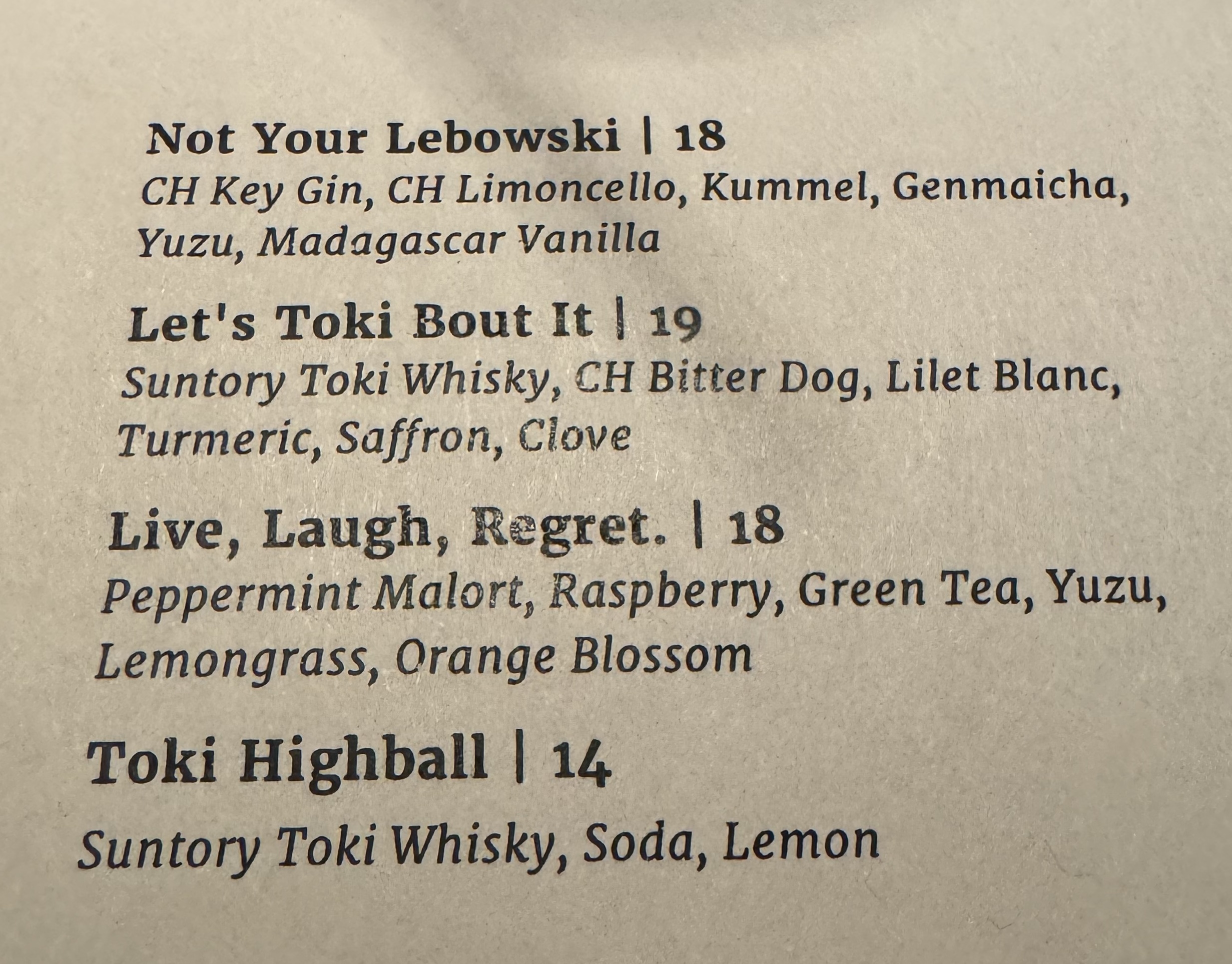
Their cocktails featured both CH products, and lots of Japanese whisky
-
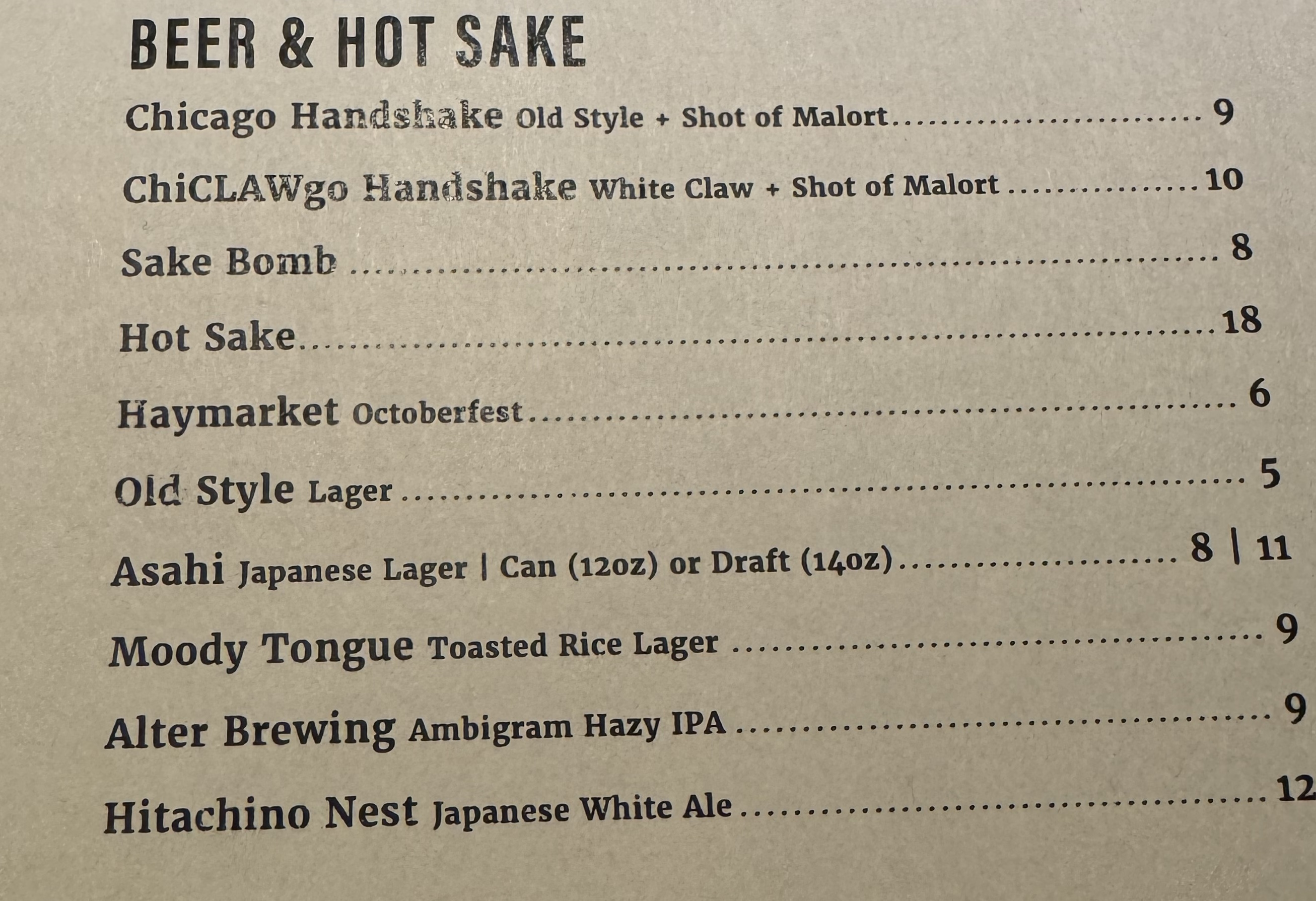
I've never seen a ChiCLAWgo Handshake, but I guess this is the future, since beer is falling out of fashion?
It was a fantastic, well-executed experience. At $195/person, it's a bit cheaper than the starred Omakase Yume, and way cheaper than the glitzy Omakase Room3. But in my opinion, this was a little nicer: Yume was pretty in-and-out, whereas this was a more relaxed pace, with plenty of time to order some extra ala carte stuff and work through the drink menu.
The Drinks
There's no pairing, but they have a variety of Chicago beers, CH products, Japanese whisky, and sake. I had gotten the sake flight: it was four pours of unpasturized sake, and came with some explainers. I tried to pair it off with appropriate fishes!
- Rihaku's Dreaming Clouds: Yuzu custard & pear
- Fukucho's Moon on the Water: Key lime pie & margarita with extra salt
- Ame No To's Heaven's Door: Salty sourdough, passion fruit, guava, with a lively cider texture
- Rihaku's Origin of Purity: Blackberry, lime, rasin bran, nougat
The moon on the water was my favorite; it went well with everything, and was great on its own.
The cocktail in the gallery, the Live, Laugh, & Regret, was pretty good. People say malort is terrible, and on its own, it is. It's a wormwood liquer, like absinthe but with the flavour more concentrated. You're supposed to dilute absinthe, not drink shots of it right out of the bottle -- you'd think absinthe is awful if you did that!
Using it in a cocktail is a much more appropriate way to deal with malort, despite Chicago tradition.
Of course, I still got the flight of malort shots. When in Rome...
A lot of aquavits I've tried featured caraway as the "in the spotlight" flavour, but I like dill more. And it's easier to pair in cocktails: cucumber & dill are very nice together. ↩
Which isn't to say Chicagoans are too dumb to understand curing. It's CH Distillery, with several Malort cocktails on offer. Talking in terms of beef is on-brand. ↩
And much, much, much cheaper than Kyoten. Which is also good, but you can bring three people to CH's omakase for the price of one seat at Kyoten. ↩